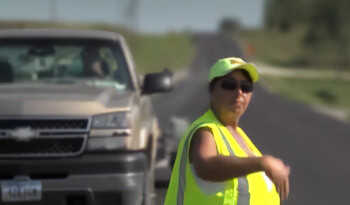List items for Rules of Conduct
Flagging is an important responsibility and should be carried out with authority and dignity. Courtesy and a professional attitude are vital in gaining the respect of the traveling public. The image you project as a flagger will affect the public’s attitude toward the whole project and your organization.
The following guidelines will make you a safer and more effective flagger.
- Park your vehicle outside the work area, well off the roadway.
- Make sure your apparel and equipment are clean and neat.
- Make sure proper signs are in place.
- Become familiar with the work activities so you can answer motorists’ questions.
- Discuss a reasonable relief schedule with your supervisor or crew leader.
When two or more flaggers will be working together, make sure one flagger is designated as the flagger in charge (the other flagger[s] will coordinate their activities accordingly). Also, make sure you:
- Are positioned so you can see each other or have two-way radios for communicating.
- Use a pilot car if you cannot see other flaggers or do not have two-way radios.
Do not leave your position for any reason until relieved.

- Always remain standing and never turn your back on traffic.
- Stand alone. Do not mingle with the work crew, the traveling public, or other people.
- Stay alert. Don’t be distracted by the work operation.
- Be friendly and polite with the public, but do not engage in small talk.
- Never argue with the occupants of a vehicle.
- If a driver refuses to obey instructions, inform your supervisor or crew leader as soon as possible without leaving your post. Carry a pocket notebook for recording:
- Information to identify the driver.
- Description of the vehicle and license plate number.
- Circumstances involved in the incident.
- Be alert to the needs of emergency vehicles. They should be given priority, but only when safety will not be compromised.
If a crash occurs in or near the work zone:
- Do not leave your post.
- Warn other flaggers and workers.
- Advise your supervisor and/or authorities.
- Record any pertinent information.